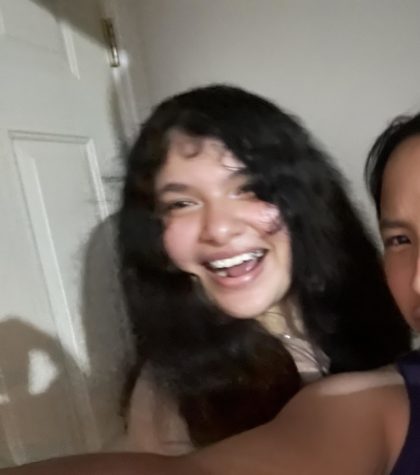Opinion | Reflecting on life in a post Roe v. Wade world
Norma McCorvey, also known by her legal pseudonym “Jane Roe,” became pregnant with her third child in 1969. McCorvey wanted to obtain an abortion; however, she lived in Texas where abortion was illegal. In turn, her attorneys Sarah Weddington and Linda Coffee would end up filing a lawsuit on McCorvey’s behalf on her local district attorney, Henry Wade, claiming that Texas’ abortion laws were unconstitutional.
This event led us to Jan. 22, 1973, in which the Supreme Court issued a majority decision that women in the United States would attain the right and abortions. This ruling led to a long line of discussions and arguments on the morality of abortion, whether it should be accessible, what the extent may be, and who should have a say on the legality of abortion.
Almost 50 years later, on June 24, I remember exactly where I was when I saw the news. I was woken up at 9:49 a.m. by a text message from my mom. Her message read in bold lettering, “Supreme Court overturns Roe v. Wade, elimination constitutional right to abortion,” accompanied by another message from her stating, “[if] they want to save babies, they need to start with saving all the children that are dying to gun violence and abuse.”
Before the end of the school year, there were murmurs of the Supreme Court potentially reversing Roe v. Wade, and subsequently, there was outrage from the Evanston community. Towards the last weeks of school, there were women standing outside the ETHS building holding a mountain of neon green flyers that read “Overturn Roe? HELL NO!” along with a message in smaller text reading “Forced Motherhood = Female Enslavement.” Once the Supreme Court decision flooded our devices in late June, that amount of community frustration from May carried over.
“I was at home scrolling through social media when I was given the news of the ruling. I honestly felt shocked, because I thought this country wouldn’t allow such an obvious patriarchal law to take control over so many lives. We truly are taking steps backward in this country’s future, and it’s scary what this act will promote in the long term,” says freshman Nicole Barros Saenz.
The justices who voted against upholding Roe v. Wade were overwhelmingly white men, yet this feels like nothing new.
“Roe v. Wade is extremely important to me, because it gives women rights to their own reproductive systems. Due to the fact that it’s now overturned in some states, the government now has control over what happens in a pregnant person’s body, which is extremely violating and immoral,” sophomore Vedah Sims states.
Overturning Roe means that a woman’s right to choose is left up to the states, since it is not nationally protected anymore. So far, 17 states have banned abortions while three states are actively deciding on banning abortion and the remaining states are keeping abortion safe and legal, with Illinois being one of them.
“When the ruling came out, I was scared. I was scared about how this was going to impact my future and my loved one’s future and my children’s future. This affects way more than women who choose to get abortions. This affects where I choose to go to college, because I want to have civil and human rights when and where I go to school. This affects other laws in play right now,” says Broughton.
The issue with the abortion ban is that it will do nothing to stop abortions, it only stops safe abortions. The abortion ban not only targets reproductive rights, it also targets low-income marginalized groups.
“I think this affects women’s bodies in ways that are hard to understand. This impacts low-income families so much more and in so many more ways [because] some of these people don’t have the [financial means] to support a child or [to] give [their] child a life it should have. [In no way] is that [the] woman’s fault and she should not be punished for that,” Broughton states.
According to recent data from the CDC in 2019, Black women had the highest rate of abortions with 23.8 abortions per 1,000 women. Hispanic women had 11.7 abortions per 1,000 women. White women had the lowest rate with 6.6 abortions per 1,000 women. It’s not hard to realize why Black and Hispanic women are receiving abortions at a higher rate than White Women. Due to years of racism and prejudice that has been ingrained in society, Black and Hispanic communities are often in a financially lower ranking than their white counterparts, meaning supporting a surprise baby cannot be an option at times.
This new ruling is infuriating. Men who don’t even know what the abortion process is like leading up to giving birth are now forcing women to experience it. The fact that the ruling is simply limited to the court’s “moral standing” and “personal opinions” is disgusting. No thought was put into how this ruling would affect already existing womanx. They are only thinking about how it would affect the soon-to-be life of a clump of cells.
Despite this disappointing and life-altering court decision, hope is not lost for reproductive rights. This is the time where we all need to step in and fight. Bans off our bodies.
Your donation will support the student journalists of the Evanstonian. We are planning a big trip to the Journalism Educators Association conference in Nashville in November 2025, and any support will go towards making that trip a reality. Contributions will appear as a charge from SNOSite. Donations are NOT tax-deductible.




